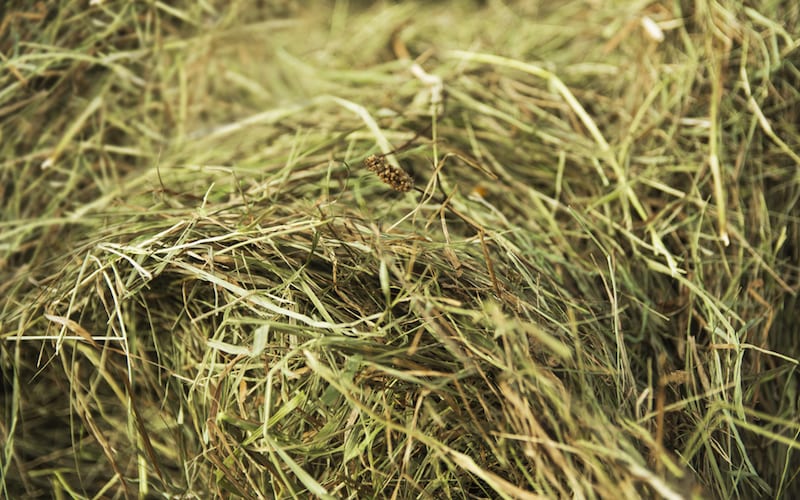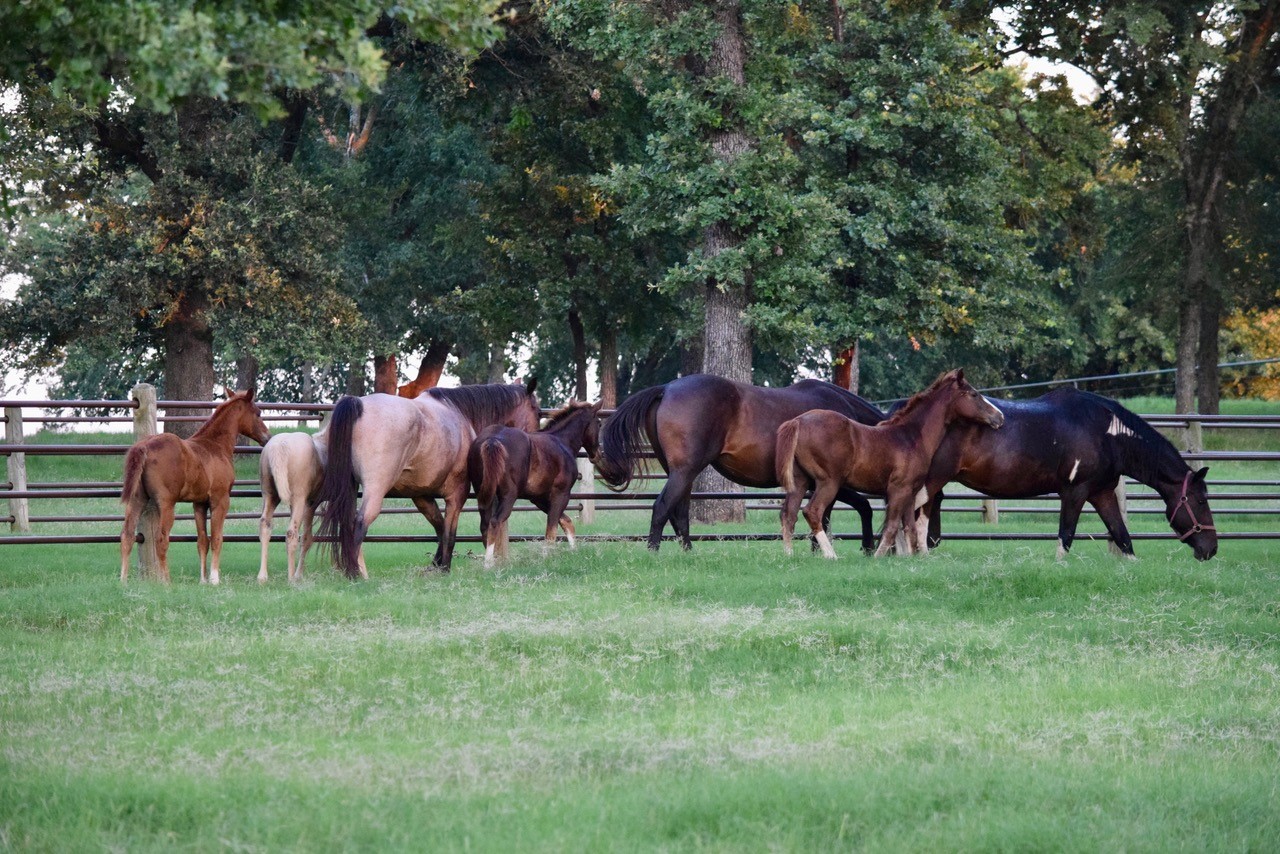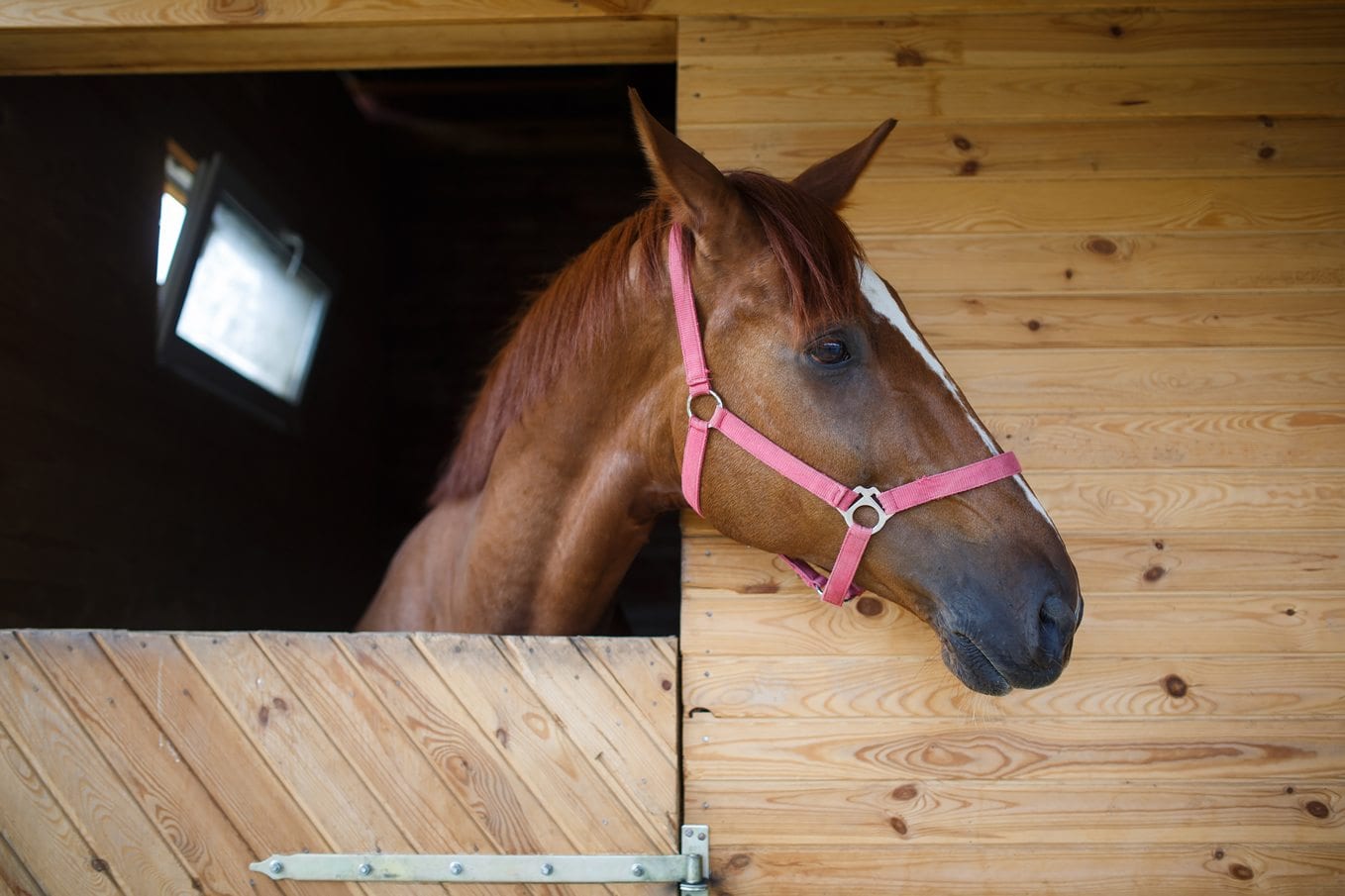There’s nothing nicer than climbing up in to a hayloft filled with dry, sweet-smelling hay. Your horse would agree — in general, the better hay smells and looks, the better it tastes and the more nutrition it provides. Forage is a key ingredient in keeping your horse’s digestive system functioning as it should, so selecting nutritious, high-quality hay is imperative.
That said, you can’t tell everything you need to know about your horse’s hay just by sniffing it. First, you need to know what type of hay your horse needs. Then, it’s time to test its quality. Here’s how to evaluate your hay to be sure it’s meeting all of your horse’s nutritional requirements.
Inspect Your Hay Visually Before Buying or Feeding to Your Horse
Only laboratory testing can truly indicate hay’s nutritional value (more on that later), but the way hay looks, smells and feels can also tell you something about its quality. When hay is….
- Green and sweet-smelling: it’s usually of good quality. The color indicates that it was baled at an optimal time.
- Light yellow on the outside of bale: it’s sun bleached, which decreases palatability somewhat to horses. The color also indicates decreased carotene (used to make vitamin A), but the hay still has nutritional value.
- Yellow throughout: it was overly mature when cut, which indicates reduced nutrient value and palatability to horses.
- Dark-brown or black: stay away. Hay this color was baled when wet, and doesn’t offer adequate nutrition. It also could make your horse sick.
Also check hay for foreign materials, such as poisonous plants, blister beetles, wire or weeds. Hay should not be dusty, moldy or smell musty. Hay in this condition will not only be unpalatable to horses, it could also cause serious illness or death, due to contaminants such as mycotoxins, or the secondary product of mold on agricultural food stuffs. Mycotoxins can produce symptoms including liver disease, digestive disorders, immune- and reproductive-system disruptions and poor feed conversion. Some can even be “masked” — or undetectable in feed.
Cool, wet growing seasons lead to increased fungi growth, which is part of the reason why we use the expression to “make hay while the sun shines.” Hay that’s been harvested, cured and stored during a dry spell is much less likely to develop mold. You can also help avoid these harmful molds by testing your feed for mycotoxins and aflatoxins.
Talk to Your Horse Hay Supplier About Harvest Times and Conditions
The time of year your hay was cut can impact its quality. Protein, phosphorus and carotene all decrease as the season progresses. Meanwhile, the hay’s indigestible fiber content increases, making it stalky and less digestible.
But be wary of hay that was cut too early in the season, which can yield wet hay that’s prone to mold. Also, you’re less likely to enjoy a long enough dry spell for the hay to properly cure if it’s cut during the wetter months of May and early June.
Ultimately, your climate and the weather will dictate exactly when hay is cut in your area, but most farmers harvest soon after the seedheads emerge (for grasses) or before the plant begins to bloom (for legumes). For that reason, the first cutting is generally considered the best of the summer.
Send Your Horse’s Hay to a Lab for Testing.
The “look and sniff test” is a great start when you’re selecting hay, but having your hay analyzed is the only way to determine its actual nutrient content.
Forage testing services are available:
- Via your local agricultural extension office.
- Via an independent laboratory, such as Equi-Analytical Laboratories, located in New York.
- Via a certified lab as identified by the National Forage Testing Association.
Most labs offering hay analysis will be able to walk you through the process of taking a sample and sending it in. Some extension offices may also be able to loan you a hay probe for sampling. Otherwise, open several hay bales and grab portions from the center of the bale. To accurately gauge the nutritional profile of your hay, it’s important to take several samples from each unique lot of hay.
How to Use Hay Analysis Test Results
Reading a hay analysis can be tricky. Results are measured both on an “as-sampled” basis and as “dry matter.” Your lab technician can help you decide which measure to use, but these two different metrics can help you objectively evaluate and balance rations to determine your horse’s individual feed intake. Here’s what else to look for:
- Crude protein: Important for all horses, but especially gestating mares or young horses. Legume hays, such as alfalfa, are generally higher in protein (from 17-20 percent) than grass hays such as fescue or Bermuda grass (about 8-10 percent). Hay harvested too late will have a lower protein content, as will bales exposed to rain or heavy dew while curing in the field. You may want to consider combining a grass hay with a lesser amount of alfalfa or another legume hay.
- Acid Detergent Fiber: The measure of fiber content, or how digestible hay is to horses, based on the amount of cellulose and lignin in the hay. Average ADF values for grass hay are around 30-37 percent; higher ADF values indicate decreased digestibility, as horses cannot digest lignin. Try to stay below 40 percent, as a horse will have to compensate for a higher ADF content by consuming more hay.
- Neutral Detergent Fiber: Measurement of cellulose, hemicellulose and lignin, which provide the “bulk” of hay. The higher the value, the less hay a horse can eat. An ideal NDF value is less than 40 percent.
- Digestible Energy: Refers to the energy in the hay, factoring in the energy lost by normal metabolic functions and feces. This is the most common source of estimating energy value in your horse’s diet.
- Water-Soluble Carbohydrates: The measure of nonstructural carbohydrates (simple sugars and fructans) in the feed. Simple sugars are digested in the foregut and raise insulin levels, putting a horse at risk for laminitis. Fructan is digested in the hindgut. If your horse has Cushing’s disease or is prone to colic or laminitis, select hay with a lower WSC value.
- Non-Structural Carbohydrates: The total amount of sugar, starch and fructan. If your horse has been diagnosed with equine metabolic syndrome, insulin resistance, Cushing’s, PSSM or laminitis, look for hay with an NSC number of less than 12 percent.
- Nitrate Ions: This number reflects a common form of nitrogen found in fertilizer. A number below 0.5 percent is considered safe; up to 1.25 percent may be fed if supplemented with non-nitrate containing forage.
You can begin to evaluate how much and what nutritional profile your horse might need with charts such as this one provided by Equi-Analytical, coupled with this nutrient requirement table, produced by the National Research Council 1989 Nutrient Requirements for Horses. For the most accurate analysis though, it’s imperative to work directly with an equine nutritionist or your veterinarian. Just don’t underestimate the value of knowing exactly what your horse is eating: any feed that makes up the majority of your horse’s diet is worth learning more about.
Finally, remember that horses should be fed at least 1.5-2 percent of their body weight in quality forage daily, and they should be given free access to graze continually around the clock. If your horse is stalled and/or fed just two or three meals a day, going for several hours at a time without hay, you should consider added digestive support to maintain a healthy stomach and balanced hindgut.
Interested in learning more like this? Join our email list for access to FREE downloads on equine digestive health, nutrition, and management in our e-book library.




